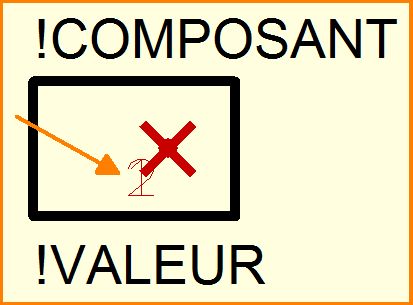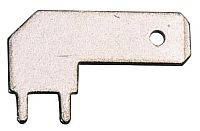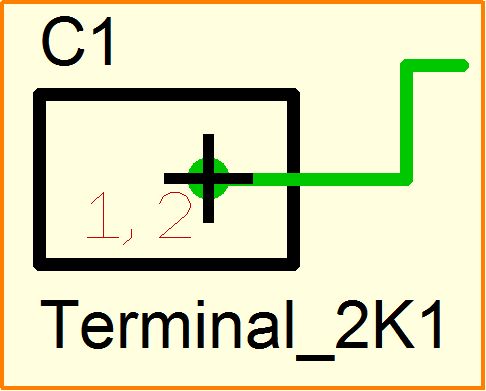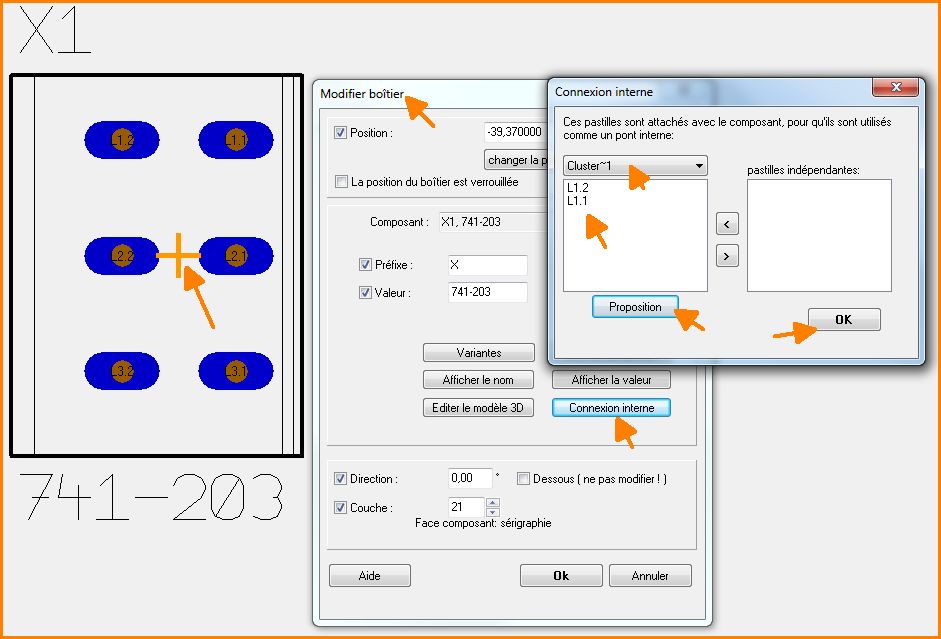Connexions internes
Dans un composant plusieurs broches / pastilles peuvent être connectés en interne pour avoir la capacité de charge électrique. Ainsi, ils peuvent être utilisés comme un pont. Par exemple dans un connecteur un terminal peut être connecté aux plusieurs pastilles:
Les deux connexions sont nécessaires pour assurer la stabilité mécanique. Si le courant de charge est bas les deux connexions peuvent avoir des pastilles séparées. Donc, la connexion interne peut être utilisée comme un pont. Voie à proximité de l'un des plots et poursuivre l'acheminement de l'autre. L'écart entre les deux peut être utilisé pour le routage à travers. Mais si le courant de charge est élevée, il peut être nécessaire de connecter les deux broches par un morceau actuel leader de la piste.
Both connections are needed to give mechanical stability. If the current load is low both connections can have separate pads. So the internal connection might be used like a bridge. Route close to one of the pads and continue routing with the other. The gap in between can be used routing through to it. But if the current load is high it might be necessary to connect both pins by a current leading piece of track.
For the fact that the decision for the load capacity in most cases is not made by the designer of the part, the user of this part needs to confirm the connection. In the layout just draw two normal pads not touching each other. In the schematic create two pins as well but place them exactly superposed to each other:

During the drawing of this symbol two pins showing the length of zero have been used. The pin names have been deleted. If several poles of the same signal in a package are wanted, several connections need to be placed superposed to each other in the symbol: 1+2, 3+4, 5+6 ...
The pin numbers 1+2 are automatically displayed side by side later:
If more than 2 pins represent one pole in a connector then the pins are combined as three: 1+2+3, 4+5+6, ... Such a combination in TARGET is called "cluster".
In a package being already placed to the layout please click M11 upon its handle cross. Use button [Internal connection] while the dialog "Change packages" flashes. Now the pins belonging to each other can be combined to clusters. If the pins in the schematic already are superposed to each other correctly then just confirm the proposal. In consequence TARGET combines all clusters automatically.
Other CAD systems (e.g. Eagle) require the decision whether pins are internally connected already when drawing the part. The properties "all" and "any" are used in a "Connect" context. "all" for: all pins need to be connected, "any" for: it is sufficient to connect any pin. This may lead to problems later because the designer of the part does not know, how heavy the electrical load later will be. A push button with one pin and a 2x2 connection in a motor control sure won't lead the complete motor current through its small package just only because 2 pins are joint together to GND:






